Sotheby's International Realty
- 138 Avenue Victor Hugo
- 75116 PARIS, France
- +33 1 40 60 50 00
Sotheby's International Realty
- 50 rue d'Auteuil
- 75016 PARIS, France
- +33 1 56 26 56 55
Sotheby's International Realty
- 82 Avenue de Wagram
- 75017 PARIS, France
- +33 1 46 22 27 27
Sotheby's International Realty
- Place Sainte Foy - 2 Rue de Chézy
- 92200 NEUILLY, France
- +33 1 41 43 06 46
Sotheby's International Realty
- Place Sainte Foy - 2 rue de Chézy
- 92200 NEUILLY, France
- +33 1 41 25 00 00
Sotheby's International Realty
- 37-39 rue de Turenne
- 75003 PARIS, France
- +33 1 48 87 14 41
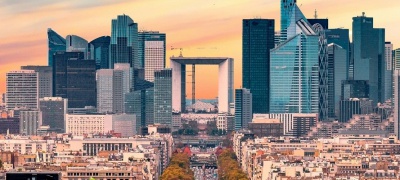
- Home
- >
- Near Paris
Near Paris
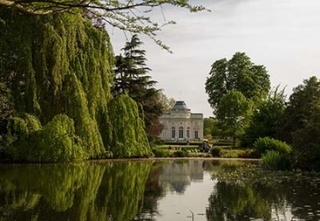
Neuilly-sur-Seine
Neuilly can be divided into 6 neighbourhoods, each with its specific particularities:
Enclosed between the Seine and the Bois de Boulogne, the Saint James neighbourhood is one of the most sought-after neighbourhoods in Neuilly-sur-Seine. Around Folie Saint James Park, magnificent properties enjoy beautiful views and notably of the Saint James Folly, a listed monument. Some properties in rue de Longchamp benefit from magnificent views of the Seine. Neuilly St James tennis club is here.
Many prestigious properties are also to be found in the Avenue de Madrid neighbourhood.
In the immediate vicinity of Bagatelle Park, one of the capital’s four botanical gardens, Boulevard Richard Wallace, Rue de la Ferme and Boulevard Charcot are keenly sought-after.
Ile de la Jatte island is home to many wealthy Parisians and well-known celebrities. It is renowned for having inspired numerous Impressionist artists, among them Seurat, Monet and Van Gogh. The island boasts the best in luxury real estate in western Paris: unique private mansions, prestigious high-floor triplex apartments, and houses with gardens overlooking the banks of the Seine.
The Neuilly-Bois neighbourhood is also among Neuilly’s sur Seine most desirable neighbourhoods. Bordered by the Bois de Boulogne, Avenue Charles de Gaulle and Avenue de Madrid, its major attraction is its proximity to the Bois de Boulogne, 846 hectares of leafy greenery and the capital’s green lung. Many properties benefit from magnificent unobstructed views. Also, the neighbourhood is just a short distance from Porte Maillot and the capital.
The Pasteur neighbourhood is so called due to its renowned schools and prestigious private street which bear the name of the renowned scientist best known for his groundbreaking work in the field of vaccination. To the north east of Neuilly-sur-Seine, this neighbourhood is framed by rue Perronet, rue de Chezy, Levallois Perret and Paris. Benefiting from numerous shops and boutiques, it also has many quality properties including superb duplex apartments, luxurious family apartments and prestigious private mansions.
Finally, although Neuilly-sur-Seine does not have an official city centre, the Sablons neighbourhood with the town hall and numerous shops may be considered to be the hub. Here superbly renovated 1930’s buildings comprise luxurious apartments, and the neighbourhood is keenly sought-after.
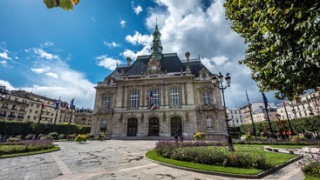
Levallois-Perret
Levallois-Perret is characterized by its high density with over 27,000 inhabitants per square kilometer. The urban fabric features narrow streets, nearly all one-way, and of limited width, making traffic challenging due to this constriction.
The contrast is particularly striking with neighboring municipalities, notably Neuilly-sur-Seine, which is separated on its western side by Rue de Villiers, a commune with very wide tree-lined avenues and buildings set back from the street; here, buildings are predominantly flush with the street.
Since the early 1980s, Levallois-Perret has been undergoing significant urban renewal. Many old buildings have been replaced by new real estate developments adhering to high environmental quality standards. The old industrial factories along the Seine, near Quai Michelet, have been replaced by buildings with more contemporary architecture, giving rise to the Quartier de l'Europe around the new Place Georges-Pompidou.
The housing stock in Levallois-Perret tends to homogenize due to this urban renewal. Consequently, Levallois-Perret mainly features large apartment buildings; houses are rare. This city, both young, modern, and very dynamic, is well-served by transportation. As a result of real estate projects on its territory, the commune regularly experiences skyrocketing property prices. It could become one of the most expensive municipalities in the Paris region due to its price increase being much higher than the regional average.
Levallois-Perret is a municipality located in the Hauts-de-Seine department, west of Paris, that is well-served by public transport and offers a pleasant living environment with a small-town atmosphere while being close to the capital. Here is an overview of the main neighborhoods of Levallois-Perret and their characteristics:
Centre-ville
The Centre-ville of Levallois-Perret is the heart of the commune, where many shops, restaurants, and services are located. It is a dynamic area with a wide variety of boutiques and cafés, as well as lively street activity enjoyed by residents. The Levallois market, located on Place Jean-Jaurès, is a central spot where fresh and local products can be found.
Clichy-Levallois
The Clichy-Levallois neighborhood, located near the border with the neighboring commune of Clichy, is a residential area undergoing significant development. It has experienced major urban renovation in recent years, with the construction of new housing and modern infrastructure. This neighborhood is appreciated for its green spaces, schools, and sports facilities.
Barbes
The Barbes neighborhood is primarily residential and consists mainly of residential buildings. It is known for its relative calm and proximity to green spaces like Parc de la Planchette. This neighborhood is mostly residential, with local shops and schools, making it a pleasant place for families.
Gare
The Gare neighborhood is situated around the Levallois-Perret train station, which provides efficient connections to Paris via the RER C line. This area is a significant commercial and office center. It also features hotels, restaurants, and various services, making it a convenient location for professionals.
Wilson
The Wilson neighborhood is characterized by its Haussmannian buildings and wide avenues. It is a residential area that offers a pleasant living environment with schools, shops, and green spaces like Parc de la Planchette nearby. It is favored for its tranquility and amenities.
Porte de Champerret
The Porte de Champerret neighborhood, located at the border with the 17th arrondissement of Paris, is a lively area with shops, offices, and hotels. This neighborhood benefits from its proximity to the Paris ring road and the Porte de Champerret metro station, making it accessible and convenient for commuting.
Parc de la Planchette
Although more of a green space than a neighborhood, Parc de la Planchette is a central location for Levallois-Perret residents. It offers recreational facilities, playgrounds for children, and spaces for relaxation. The park is a major asset for the surrounding area and contributes to local quality of life.
Collange
The Collange neighborhood is a residential area with a village-like atmosphere. It is appreciated for its calm and picturesque small streets. This neighborhood is ideal for families seeking a tranquil living environment while being close to local amenities.
Levallois-Perret thus offers a variety of neighborhoods with distinct characteristics, ranging from lively commercial and business areas to peaceful residential neighborhoods, all while having good access to infrastructure and green spaces.
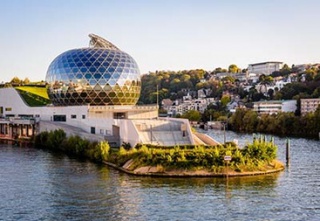
Boulogne-Billancourt
Boulogne-Billancourt is a commune located in the Hauts-de-Seine department, to the west of Paris. It is known for its blend of residential areas, commercial zones, and green spaces, providing a balanced urban environment. Here is an overview of the main neighborhoods of Boulogne-Billancourt and their characteristics:
Centre-ville
The Centre-ville of Boulogne-Billancourt is the commercial and administrative heart of the commune. This area features a vibrant mix of shops, restaurants, and services. Key landmarks include the Place Marcel Sembat, a bustling square surrounded by retail outlets and cafés. The Boulevard Jean Jaurès, a major thoroughfare in this area, hosts various businesses and cultural sites, adding to the neighborhood’s dynamic atmosphere.
Rives de Seine
The Rives de Seine neighborhood, located along the banks of the Seine River, is known for its scenic views and modern residential developments. This area has seen significant urban renewal, with the construction of new residential buildings and office spaces. The Île Seguin, an island in the Seine, is a focal point of development, transforming from an old industrial site into a modern, mixed-use district featuring residential complexes, offices, and leisure facilities.
Billancourt
Billancourt, historically an industrial area, has undergone extensive redevelopment. It features a mix of residential, commercial, and cultural spaces. The Parc de Billancourt is a major green space in the area, offering recreational facilities and gardens. The neighborhood is also home to the Musée Paul-Belmondo, dedicated to the works of the sculptor Paul Belmondo.
Pont de Sèvres
The Pont de Sèvres neighborhood is situated near the Seine River and is known for its residential character and proximity to the river. This area features a mix of apartment buildings and green spaces. The Parc de l'Île Saint-Germain, located nearby, offers extensive green areas and recreational facilities, making it a popular spot for outdoor activities.
Boulogne-Billancourt Sud
The Boulogne-Billancourt Sud area is a predominantly residential neighborhood characterized by its quieter streets and family-friendly environment. It is home to various schools, parks, and local amenities, providing a comfortable living space for residents. This neighborhood also benefits from its proximity to public transportation, facilitating easy access to other parts of the commune and Paris.
La Seine Musicale
La Seine Musicale is a modern cultural and entertainment district located on the Île Seguin. It is centered around the La Seine Musicale concert hall, which hosts a variety of music performances, theater productions, and other cultural events. This area also includes the Cité Musicale complex, featuring additional cultural and recreational facilities.
Eiffel
The Eiffel neighborhood is named after the iconic engineer Gustave Eiffel and is known for its charming streets and residential character. It offers a blend of historic and modern architecture, with a range of housing options and local amenities. This area benefits from its proximity to public transportation and local services, making it a desirable place to live.
Les Princes-Marmottan
The Les Princes-Marmottan area is a residential neighborhood known for its calm and family-friendly environment. It features tree-lined streets and a mix of housing types, including apartment buildings and houses. The presence of local parks and schools adds to the appeal of this neighborhood for families and professionals alike.
Boulogne-Billancourt thus offers a diverse range of neighborhoods, each with its unique characteristics, from lively commercial areas and modern developments to tranquil residential zones and cultural hubs. This variety makes the commune an attractive place to live and work, with excellent access to both green spaces and urban amenities.
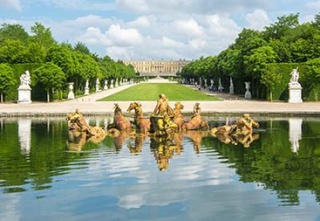
The Yvelines
Les Yvelines is a department located to the west of Paris, known for its varied landscapes, historic towns, and green spaces. Here is a detailed overview of the main cities in Les Yvelines and their characteristics:
Croissy-sur-Seine is a charming residential town on the banks of the Seine. It is appreciated for its village-like ambiance and green surroundings. The Grand Jardin Park is a central green space popular among residents. Properties in Croissy-sur-Seine primarily include single-family homes with gardens, offering a pleasant quality of life close to the Seine.
Chatou is known for its charming streets lined with historic houses and parks. The Parc des Impressionnistes is a notable location where famous artists found inspiration. Chatou’s market is a highlight, offering a variety of local products. Properties in Chatou range from traditional houses to modern apartments, often with gardens or terraces.
La Celle-Saint-Cloud combines historical elements with modern developments. Known for its residential ambiance and green spaces, the city features the Parc de la Grande Terrasse, a popular leisure spot with panoramic views of Paris. Properties in La Celle-Saint-Cloud include elegant homes and modern villas, often situated in quiet, green neighborhoods.
Louveciennes is a picturesque town with a notable artistic history, having attracted painters like Renoir. The Parc de la Princesse is a central recreational area. Louveciennes offers elegant houses and properties with large gardens, typically in quiet, residential areas.
Bougival is a charming town located along the Seine, known for its picturesque views and tranquil setting. The Parc de la Villa des Chênes is a popular spot for walks. Properties in Bougival range from traditional houses to modern apartments, often with river views or private gardens.
Saint-Germain-en-Laye is a historic city with a rich royal heritage, notably featuring the Château de Saint-Germain-en-Laye and its beautiful gardens. The charming city center offers pedestrian streets, shops, and cafés. Neighborhoods like Chantier and La Verrière offer bourgeois houses and modern residences. The city is renowned for its large green spaces, such as the Parc du Château, providing panoramic views of Paris.
Orgeval is a small residential town with a peaceful, village-like atmosphere. The Parc du Château de la Reine Blanche is a pleasant location for outdoor activities. Properties in Orgeval include family homes and villas, often situated in verdant, peaceful neighborhoods.
Villennes-sur-Seine is a town located along the Seine, offering a pleasant living environment with many green spaces. The Parc de la Vallée is a popular spot for families. Properties in this town range from homes with gardens to modern apartments, often with river views or outdoor spaces.
Triel-sur-Seine is a town with a rich historical heritage and beautiful views of the Seine. The Parc de la Poudrerie is an important green space for leisure and relaxation. Properties in Triel-sur-Seine include traditional houses and modern apartments, often with gardens or terraces.
Versailles is an iconic city, famous for the Château de Versailles, a UNESCO World Heritage site. The area around the palace is historic, with magnificent gardens and 17th-century buildings. The city is also known for its lively town center, featuring shops, restaurants, and markets. Neighborhoods like Saint-Louis and Notre-Dame offer elegant residences, ranging from luxury apartments to historic houses.
Le Chesnay-Rocquencourt is a residential city with a mix of old neighborhoods and modern developments. Rocquencourt is calm with many green spaces, while Le Chesnay is more dynamic with shops and services. Properties in Le Chesnay-Rocquencourt vary from traditional houses to new buildings, often with gardens or outdoor spaces.
Poigny-le-Temple is a small town with a village-like character, offering a peaceful living environment. The town is surrounded by nature, with green spaces and walking trails. Properties in Poigny-le-Temple primarily include single-family homes with gardens, providing a tranquil atmosphere close to major cities.
These cities in Les Yvelines offer a range of living environments, from the historic elegance of Versailles to the picturesque settings of Croissy-sur-Seine and Bougival. Each city has distinct characteristics that contribute to the diversity and appeal of this department.
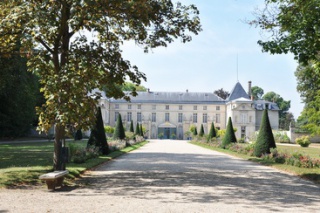
The Hauts de Seine
Les Hauts-de-Seine is a department rich in history and high-quality residential areas. Here is an in-depth overview of the most renowned and luxurious cities in this department:
Neuilly-sur-Seine is one of the most prestigious and affluent cities in the Hauts-de-Seine. Known for its elegant residential neighborhoods, luxury homes, and high-end boutiques, Neuilly-sur-Seine represents refined living. The city is characterized by wide avenues and green spaces, such as the Bois de Boulogne, offering picturesque walks. Properties in Neuilly-sur-Seine often feature stone facades, wrought-iron balconies, and private gardens.
Boulogne-Billancourt combines historical charm with modernity. Once an industrial city, it has undergone a significant transformation with the redevelopment of its former industrial zones. Today, it features modern residential neighborhoods, notably around the Rives de Seine and Île Seguin. The city offers contemporary properties with river views and a varied range of shops, restaurants, and the iconic Seine Musicale cultural center.
Levallois-Perret stands out for its modern urban planning and urban renewal projects. Formerly an industrial city, Levallois-Perret has experienced a major transformation, with numerous new contemporary buildings. The Parc de la Planchette, a central green space, and Place Jean Jaurès, a lively commercial center, are key locations. Properties are typically characterized by modern architecture and high-end finishes.
Suresnes has a strong military and industrial history, particularly around Mont Valérien. The Parc du Château, a large park offering panoramic views of Paris, is one of the city’s major attractions. Suresnes offers elegant homes and spacious properties, often with gardens, benefiting from stunning views of Paris.
Garches is a picturesque town known for its village-like atmosphere and elegant homes. With its cobblestone streets and numerous green spaces, Garches provides a tranquil living environment. The Parc de l’Hôtel de Ville is a popular relaxation spot for families, and properties are often characterized by their historic charm and peaceful surroundings.
Saint-Cloud is renowned for the Parc de Saint-Cloud, a vast green space offering splendid views of Paris. Formerly a royal residence, the city retains a rich aristocratic history. Properties in Saint-Cloud are often spacious homes with large gardens, situated in quiet, green neighborhoods.
Vaucresson is a residential town known for its elegant properties and numerous green spaces. The Parc de la Mairie is a recreational area enjoyed by residents. Properties in Vaucresson are typically modern houses with gardens, located in peaceful residential neighborhoods.
Rueil-Malmaison is known for the Château de Malmaison, an important imperial residence in French history. The city offers a mix of historical charm and modernity, with a range of properties from charming houses to more contemporary residences. The Parc du Château is a central location that adds to the city's appeal.
La Celle-Saint-Cloud combines historical elements with modern developments. Known for its village-like ambiance, the city is surrounded by elegant properties and large gardens. The Parc de la Grande Terrasse is a popular spot offering views over Paris.
Boulogne-Nord is a neighborhood in the northern part of Boulogne-Billancourt, known for its residential appeal and proximity to the Bois de Boulogne. Properties in this area are often modern apartments and single-family homes, with park views and located in quiet streets.
Issy-les-Moulineaux is a city that combines modern developments with historical charm. The Parc de l'île Saint-Germain is a natural space appreciated by residents. Properties in this city range from modern apartments to high-end buildings, often located in well-served neighborhoods close to green spaces.
Colombes is a dynamic city with a mix of old and new buildings. The lively town center offers a variety of shops and services. Properties in Colombes include apartments and houses, offering a wide range of residential options.
Bois-Colombes is a historic commune with a pleasant residential atmosphere. The neighborhoods are characterized by family homes and apartments, with green spaces such as the Parc des Bruyères. The city offers a calm environment and properties with gardens.
La Garenne-Colombes is a city where history and modernity blend. The Parc des Chênes is a local green space enjoyed by families. Properties in La Garenne-Colombes include houses and apartments situated in quiet residential neighborhoods, with good access to green spaces.
Asnières-sur-Seine is a city with a diverse range of neighborhoods. It offers a mix of housing from historic buildings to modern developments. The Parc Robinson is a relaxation spot for families, and properties in the city vary between contemporary apartments and older houses.




